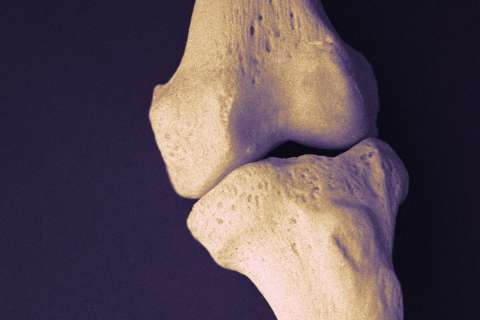Dear Doctors: I have been dealing with toenail fungus on just a single toe for more than a year. There is a mountain of misinformation about it on the internet, and I keep seeing ads for all sorts of drugstore products that claim they can cure it. Any suggestions for how to deal with this?
Dear Reader: You are asking about a topic that, each time we have written about it in the past, brings a flood of mail. Toenail fungus is a common -- and very stubborn -- infection. Also known as onychomycosis, is estimated to affect between 6 million to 7 million people in the United States. Although the effects are visible on the exposed part of the nail, the fungi that cause the infection are housed within the nail bed. And because our nails are so well-engineered to shield the tips of our toes from potential threats such as moisture and trauma, the fungi that take up residence beneath them are largely protected.
For those who are unfamiliar, symptoms include nails that gradually become discolored, often with a yellowish, brown or gray hue. They also become thickened and malformed, often with a brittle or crumbling texture. As the infection progresses, the nail plate can grow so thick that it becomes difficult to trim. Sometimes the infected area will also exude a musty scent. Once a fungal infection takes hold, the dark and moist environment provided by socks and shoes can help it spread to the neighboring toenails.
When it comes to treatment, the options are somewhat limited. The topical nonprescription ointments and liquids you have been seeing can make the nail look better. However, the protein that makes up the nail plate, which is known as keratin, is not porous. That means topical medications can’t reach the entire site of the infection. Our readers have reported success with home remedies, such as the use of tea tree oil and Vicks VapoRub.
A more effective approach has been an oral antifungal medication, which requires a prescription. The medication enters your blood stream and is delivered to the network of blood vessels that serve the nail bed. As with many medications, antifungals have potential side effects. These include headache and stomach upset. These meds can also affect the liver, which makes liver function tests necessary. The treatment, which lasts several months, is up to 80% effective. It can take from six to 18 months for complete results. And if you stop the medication too soon, the infection can rebound.
More recently, the use of lasers to treat toenail fungus has grown in popularity. This requires multiple treatments and, because data is somewhat limited, the efficacy is not yet clear. An even newer approach, known as cold atmospheric pressure plasma, is now being explored. Also referred to as CAPP, it involves the use of a device that delivers localized shock waves, which researchers say are effective at killing the fungus. This treatment is still being studied and is not yet in use. However, considering the millions of people affected by toenail fungus, it will likely make headlines if and when it becomes available.
(Send your questions to [email protected], or write: Ask the Doctors, c/o UCLA Health Sciences Media Relations, 10960 Wilshire Blvd., Suite 1955, Los Angeles, CA, 90024. Owing to the volume of mail, personal replies cannot be provided.)





